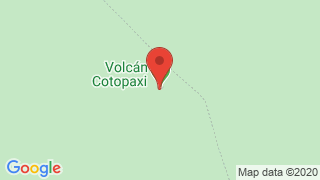Cotopaxi Volcano







Cotopaxi
Cotopaxi-Ecuador volcano has almost perfect cone-alike snow. It is something unique on the planet and is perhaps, like Galapagos, the greatest symbol of our natural wealth, which is known throughout the world. Because it is located in the center of the inter-Andean alley and very close to several cities such Quito and Latacunga, it is the all tourists’ desire to crown El Cotopaxi, which offers a spectacular panoramic view, its landscape allows to know the vegetation on its slopes , you can also visualize the mineral features that have left ancient volcanic eruptions, on its eastern slopes there is a Shelter, where tourists can enjoy the scenery to the valley and the Limpiopungo lagoon, include wild ducks in their panorama. A permit granted by the authorities of the Cotopaxi National Park is required for them to ascend. The park is located in a volcanic area, the largest in Ecuador. Cotopaxi volcano is at the central part, one of the most active and highest volcanoes in the world. The Cotopaxi Ecuador is located in Ecuador’s central sierra region in the Andes Mountains.
What is the meaning of Cotopaxi?
Cotopaxi its name means "neck of the moon", is a place name of our country. You can refer to: Cotopaxi province of Ecuador. Cotopaxi Volcano, in Ecuador.
Cotopaxi Tourism Volcano
Sunfana Viewpoint: From there you can see vast pine forests on the Sunfana Plain, at the foot of the viewpoint. It is reached by walking in about 30 minutes from the Administrative Center or by vehicle; There is a place to camp there and if you follow the path for about two hours you will reach the slopes of the Rumiñahui volcano.
Mountaineering, the Cotopaxi volcano has an exotic dry micro climate that allows its ascent almost all year. Starting from 4800 meters and in an approximate time of 6 to 8 hours, you can reach the foot of the impressive crater half a kilometer wide and be ecstatic with the spectacular view of the tops of most volcanoes in Ecuador. Technically it is not complicated to crown it, however a guide will be of great help in case of being a rookie.
Lagos de Cajas: A pleasantly impressive landscape shows us the lagoons, located in the south-east of the Park, about 3 km from the Mauca-Mudadero control.
Quishuar Trail: On the route that allows you to enjoy several tourist attractions in the area, especially crossing the pine forest.
Laguna de Santo Domingo: It is presented as an interesting landscape resource. Near the spring that supplies it, there is evidence of archeological archaeological remains that have the quadrangular shape of stone walls.
Cotopaxi volcano features
How many meters is the Cotopaxi volcano? For those who like to practice mountaineering, it has been calculated that the width of its crater from east to west measures 500 m and from north to south about 700 m. The Cotopaxi have an altitude of 5943 m s. n. m. considered the second largest volcano in Ecuador.
Cotopaxi volcano Climate: The temperature varies according to altitude, takes into account that it is humid, temperate wasteland, with an average temperature of 12 ° C, in the snow with temperatures below zero.
Cotopaxi volcano Biodiversity: Chuquiraguas is its native plant, however an important pine plantation can be seen that covers approximately 1750 ha, other native plants are pumamaquis, romerillo, mortiño and capulí, they are just some of the species that can be found. In relation to fauna, curiquingues, deer, rabbits, wolves of the moor and the rarely seen Andean condor, can appear at any time.
Cotopaxi volcano location The Cotopaxi volcano is located in the Central Cordillera of the Ecuadorian Andes, 62 km northeast of Latacunga and 75 km southeast of Quito.
Limits: To the northeast the volcano off Sincholagua, and the Rumiñahui to the west; the Quilindaña to the southeast.
When did the Cotopaxi volcano erupt?
The last registered eruption was in August 2015
Cotopaxi National Park
Cotopaxi volcano how to get there. Public transport buses do not enter the Cotopaxi National Park, and the volcano is about an hour from the road where buses leave visitors. It is generally recommended to rent a private transport from Quito to arrive. Most mountaineering expeditions include transportation to and from Quito.
Fauna: The Andean condor in the Cotopaxi can find this bird that is in danger of extinction, it is an emblematic bird that belongs to the Andean moorland, other specimens such as the spectacled bear, hummingbirds, deer, wolf of moor, field mouse, wild rabbit, etc
Flora: It is classified by the type of vegetation:
Humid Forest: It is characterized by the sub- moore where chuquirahua, moss, chilcas, capulí trees grow, among others. This forest is located at the foot of the Cotopaxi volcano.
Pluvial Moor: predominance of moor straw, lichens and lycopodia.
Alpine pluvial tundra: Mosses, lichens and some other species are located in smaller quantities
Snow: Where it meets snow the glaciers do not allow the growth of vegetation
What should you take Cotopaxi volcano?
- Warm Wool Cap
- Warm sweater
- A pullover
- A scarf,
- warm gloves
- Trekking shoes
- Warm stockings
- Sunglasses, sunscreen
- Personal water bottle
- Extra money
- Camera
- Snacks

Publicado en:
Publicado por:



